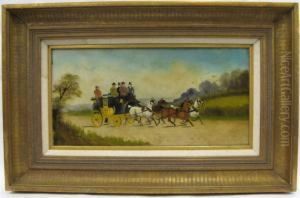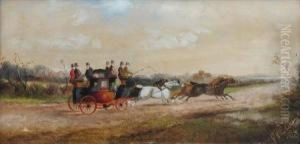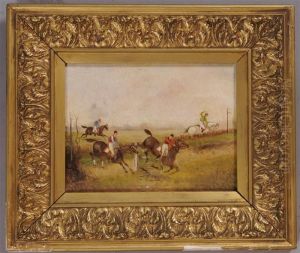Phillip Henry Rideout Paintings
Phillip Henry Rideout was a British artist, born in 1860, who made significant contributions to the art world during the late 19th and early 20th centuries. His body of work primarily comprises landscape paintings, though he also dabbled in portraiture and genre scenes. Rideout's artistic journey began in his early years, showing an innate talent for capturing the beauty and subtlety of the natural world around him.
Educated in the traditional art schools of the time, Rideout honed his skills under the tutelage of prominent artists, embracing both the technical rigor and the creative freedom that defined the Victorian era's artistic movements. His style, though rooted in the realism that dominated the period, also exhibited a remarkable sensitivity to color and light, characteristics that became hallmarks of his work.
Throughout his career, Rideout exhibited his work at various prestigious venues, including the Royal Academy of Arts, a testament to his talent and the recognition he garnered among his contemporaries. His landscapes, often depicting the English countryside, are celebrated for their detailed brushwork and atmospheric effects, conveying not just the visual beauty of the scenes but also their emotive qualities.
Despite his success, Rideout remained a relatively private figure, dedicating himself to his art rather than seeking the limelight. After his death in 1920, his work continued to be appreciated by art collectors and historians, though he has not achieved the same level of fame as some of his contemporaries.
Today, Phillip Henry Rideout's paintings are held in various public and private collections, admired for their contribution to the rich tapestry of British art history. His legacy, though quiet, is a testament to the enduring appeal of his approach to landscape painting, embodying a blend of technical skill and poetic sensibility that continues to captivate viewers.













